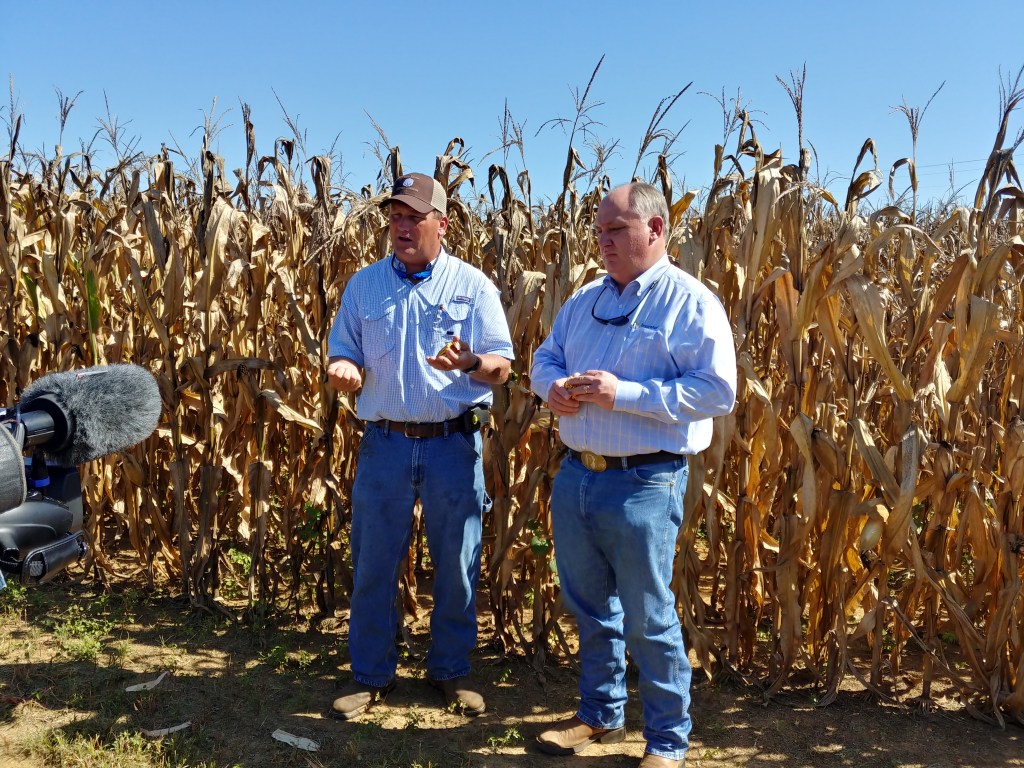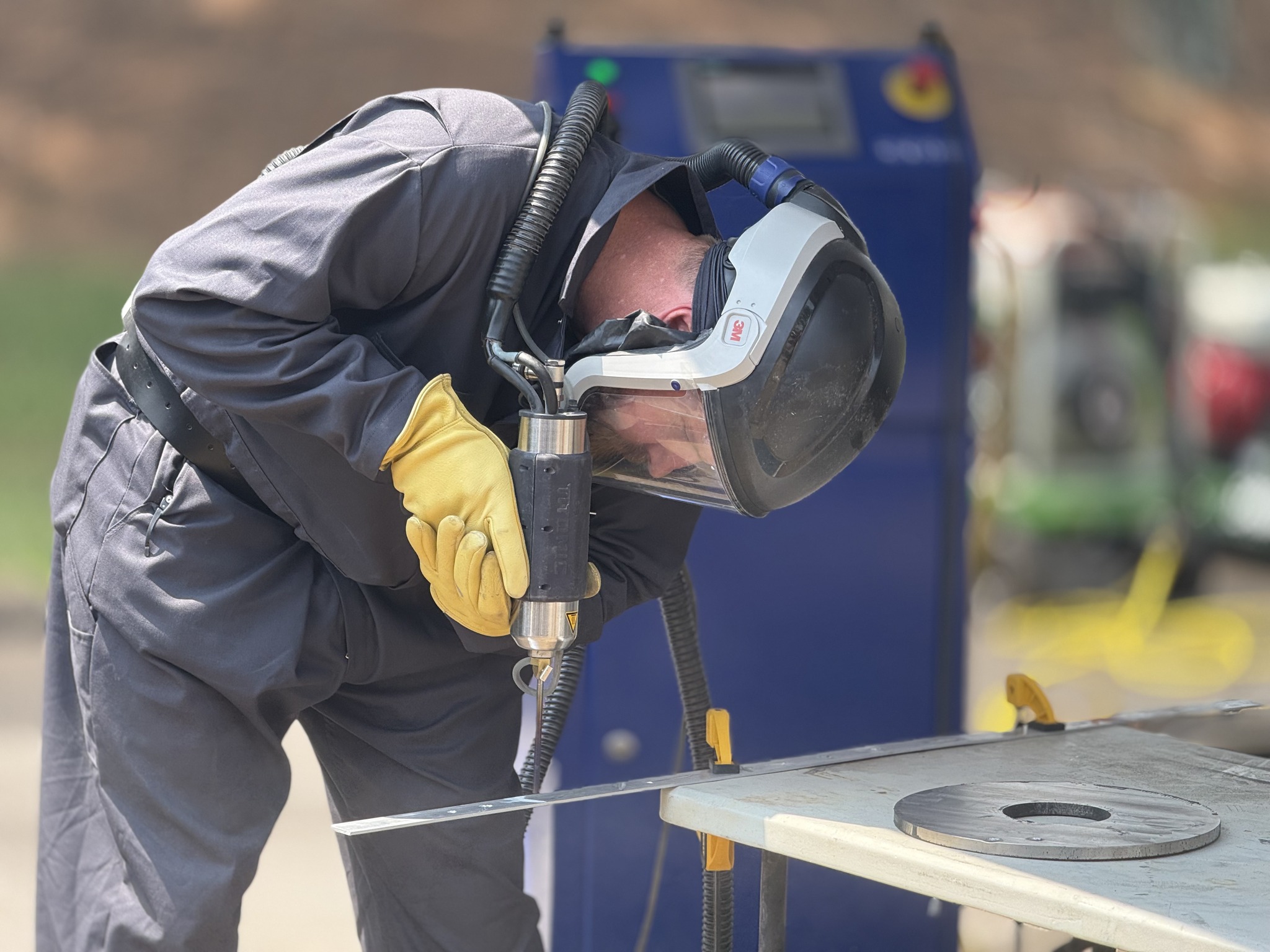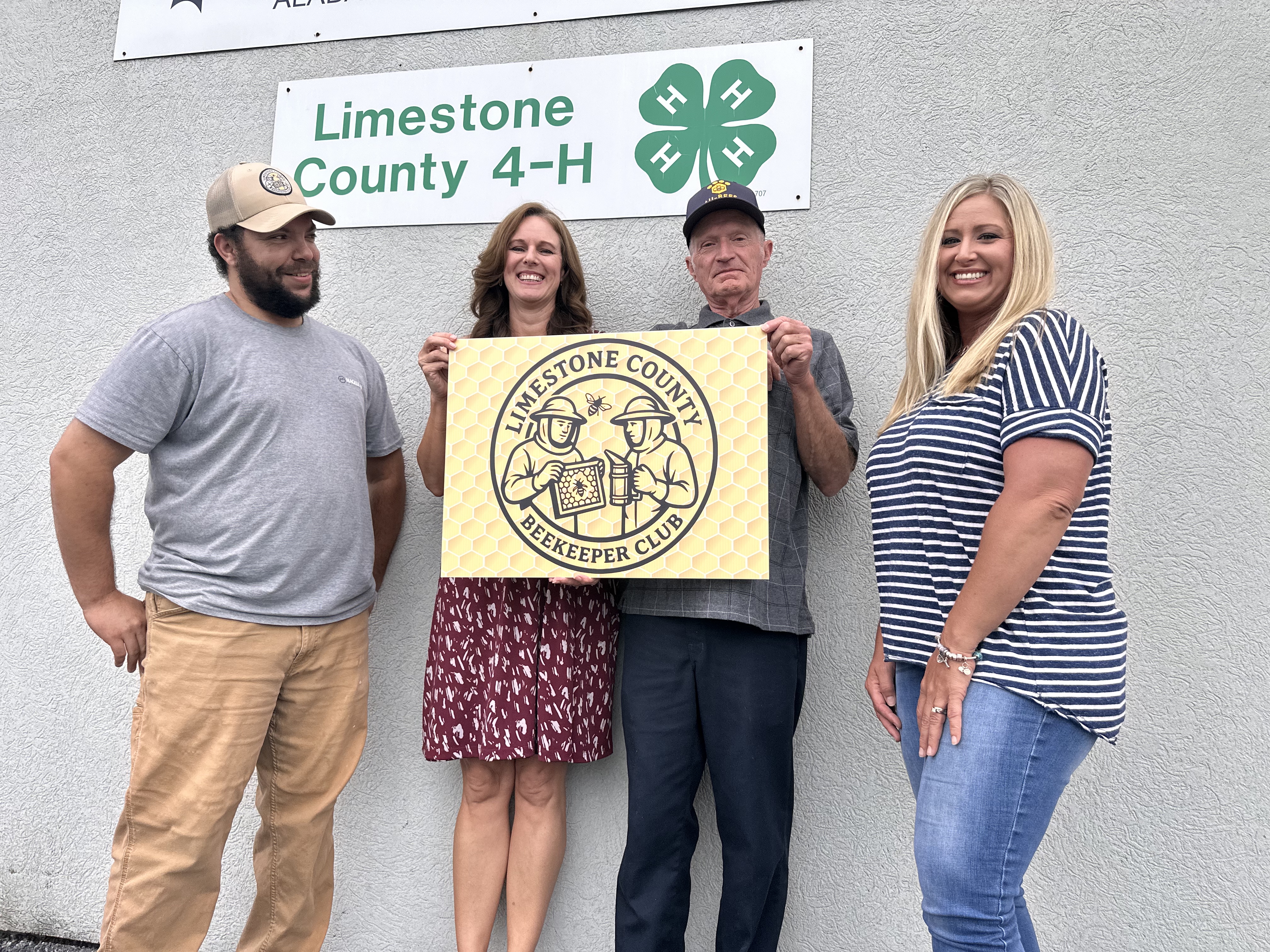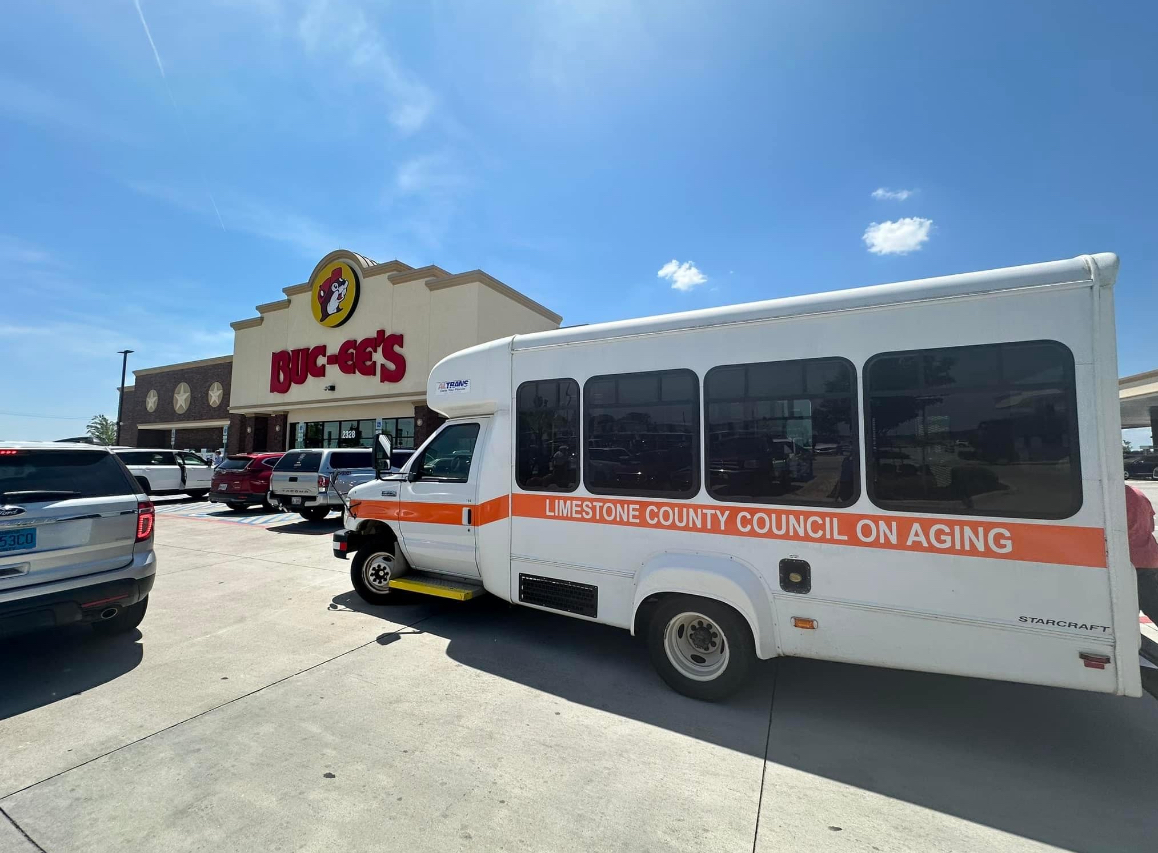ALABAMA CROP OUTLOOK: Farmers talk weather, future of farming
Published 5:45 am Saturday, August 17, 2019

- Elkmont farmer Jessie Hobbs, left, and Alabama Farmers Federation president Jimmy Parnell talk Friday at Hobbs Farms in Elkmont about the current state of farming, the issues farmers face and the future of farming.
Despite heat waves and spotty rainfall, farmers say Limestone County seem to be doing better than many others in the state.
At a crop outlook tour Friday morning, Elkmont farmer Jessie Hobbs and representatives from the Alabama Farmers Federation explained some of the issues that farmers have faced this year. However, they said, many farmers are expecting a good crop nonetheless.
“I don’t think we’ll have the yield per acre that we had last year, because we almost had a Cinderella year last year, but I still think, on average, it’ll be a good crop this year,” Hobbs said.
He said there had been an almost unheard of variety in the amounts of rainfall on his farm, which spans about 20 miles in any direction from his Elkmont home, including parts of Giles County, Tennessee. However, he said, the spot with the largest rainfall and the spot with the lowest amount of rainfall were only about 3 miles apart.
“You would think 3 miles is not that far, but this year, like I’ve always said, sometimes the difference between a good crop and a bad crop was a half-inch of rain at the right time,” Hobbs said, adding those two spots saw a difference of 27–28 inches of rain between them.
AFF President Jimmy Parnell said that variation can be found across Alabama, with some parts that were dry earlier in the year finding rain now, while others are now experiencing dryness that could affect their crops.
“The central part of the state is driest at this time,” said Parnell, who farms in Chilton County. “We probably started out one of the wettest parts of the state, but we’ve been really dry lately.”
Hobbs said southern Limestone County is also experiencing a dry spell, making it somewhat worse off than northern Limestone County.
“A lot of the land south of (U.S.) 72 has been very dry,” he said. “There’s certain parts that have been 40-something days without a single drop of rain, and they have the same type of soils we have.”
Those soils, he said, are only three to four days from drought at any given time.
“You hate to say that, but it’s true,” Hobbs said.
Parnell said one of the main issues farmers face that the public may not be aware of is how quickly weather can take away an already small margin of profit.
“If you want to talk about what’s the biggest concern in our culture, it’s profitability,” Parnell said. “Input costs are high, margin is low — very low — and then you have the weather, which you have to deal with, and the weather can take that small margin away from you in almost a blink of an eye.”
It’s one reason Hobbs said he’s glad they can rotate crops, avoid repetition and reduce their risk by spreading it out through the year. Rotating crops, he explained, means farmers don’t have to rely on one crop to pay all the bills and can prevent pests and crop disease from becoming immune to herbicides or pesticides.
Currently, Hobbs Farms is growing corn, most of which will go to feed poultry. He said he doesn’t know yet how good the crop will be this year, “but I’m tickled so far at what I’ve gotten to see.”
Community support, concerns
Corn isn’t the only thing Hobbs Farms produces. They also grow cotton, soybeans, wheat and pumpkins. Hobbs said it’s all part of his job, “to try to feed and clothe America.”
His job stretches beyond that, however, to include his work at the local level and his competition at the global level. Hobbs, an Elkmont city councilman, uses his land for community events, including dove hunts, church meetings, fall pumpkin displays and more.
“We try each year to make a difference in our community,” he said.
When he isn’t playing host, he and the rest of the Hobbs Farms staff are working to make a crop worthy of the global market.
“I’m not just competing here in this small community of Elkmont or even in the state of Alabama,” Hobbs said. “I’m competing against people in China and other parts of the world, so we have to have the prettiest sellable crop.”
He said people aren’t always aware of the time it takes to be productive on both levels, describing the labor force in agriculture as “pretty tough.”
“This past summer, when we were harvesting wheat, putting back the double-crop beans — and in certain areas, we’ll harvest the wheat stubble to make straw for the fall decorations — I put several 100-hour weeks in,” Hobbs said.
It also takes money — a lot of it. Hobbs admitted he has had to borrow money to afford to start a crop, and sometimes it feels like it’d be easier to trade in equipment than repair it. For example, a set of tires alone can cost him $20,000.
“Equipment is so expensive now,” Hobbs said. “Everything I touch feels like it’s gone up 100%.”
That feeling isn’t far off. A 2017 census of agriculture from the U.S. Department of Agriculture found total farm production expenses in Alabama have increased 78% since 2002 and an estimated 186% from 1987.
Future of farming
While farming may be OK this year, the long-term may not be so lucky. Parnell and Hobbs are each fifth-generation farmers with kids that are being raised in farming, just like they were.
“I am the fifth generation on this farm, raising the sixth,” said Hobbs, who has four children.
That next generation, according to Parnell, might be the biggest problem facing farming in the long term.
The 2017 USDA census found the amount of Alabama land used for farming has dropped by almost 1 million acres, from about 9.52 million to 8.58 million, since 1997. The number of farms has also decreased by nearly 10,000 in those 20 years, from 49,872 to 40,592.
Fewer acres are being used for cropland, too. Parnell said right now, Alabama corn can provide about a week’s worth of food for the chickens being raised. He believes an increase in profitability will boost farming, as will finding and training the next generation of farmers.
“Most folks in our culture grew up on a farm,” he said. “There are some exceptions. You can get started from scratch, but it’s tough. You lack the knowledge, the background that it really takes. So I’m concerned, if you’re talking about 50 years from now, who is the next generation of farmers? Are they out there? Will they be able to feed America and the rest of the world?”
When they’re found, they need to be ready to accept farming isn’t the way it used to be. Parnell said regulation is changing, and technology has come a long way. Hobbs uses an app to track rainfall in different parts of Hobbs Farms, and he said workers have to be able to do more than operate machinery in a field.
“You have to have an individual who can run a tractor with a large piece of equipment not just in the field but up and down the road, to be safe in doing both, but he also has to be able to run a computer now because most of our equipment is computerized,” Hobbs said.
That said, the payoff is worth it. Even with increased costs, decreased land and an unsure future, the love of the job remains priceless.
“I’m so proud to say I’m an Alabama farmer,” Hobbs said. “… To know what I did made an impact, it means a lot. I appreciate everybody supporting us, and if you haven’t had a chance to talk with a farmer, sit down and talk to him.”
Of course, make sure nothing broke down on him that day, because “certain days truly aren’t as good as others” for talking, he said.





